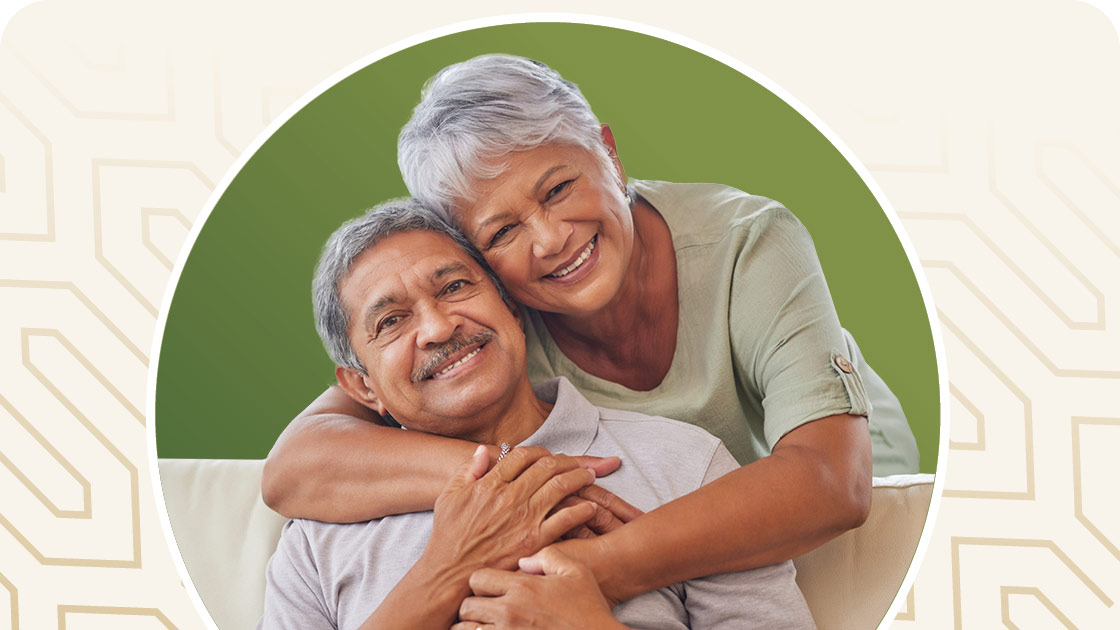Older adults have a variety of great reasons for moving into a senior living community. Among the many benefits, senior safety and security is at the top of the list.
While falls and accidents are risks for anyone, adults aged 65 and older face an increased likelihood. According to the Centers for Disease Control and Prevention (CDC), more than one in four older adults report falling each year, making falls the leading cause of injury and injury-related deaths within this age group. This stark reality underscores the crucial role that prioritizing safety plays in senior living communities.
Home may be where the heart is, but it’s also the place where accidents happen most often. Household activities and clutter can easily put someone off balance. If that person is living alone, it’s difficult to call for help. And the senior safety concerns go on: kitchen fires, medication errors, driving accidents, crime.
No wonder family members worry so much about the safety and security of their loved ones living alone. Without the safety systems found in a senior living community, the risk of injury is higher. As families explore senior living options, ensuring a safe and secure environment is paramount. From emergency response protocols and surveillance technology to staff training and facility design, we’ll explore the comprehensive measures that contribute to the well-being and peace of mind of residents and their families. Learn key considerations as we provide valuable insights for making informed decisions when it comes to selecting a senior living community that prioritizes the safety and security of its residents.
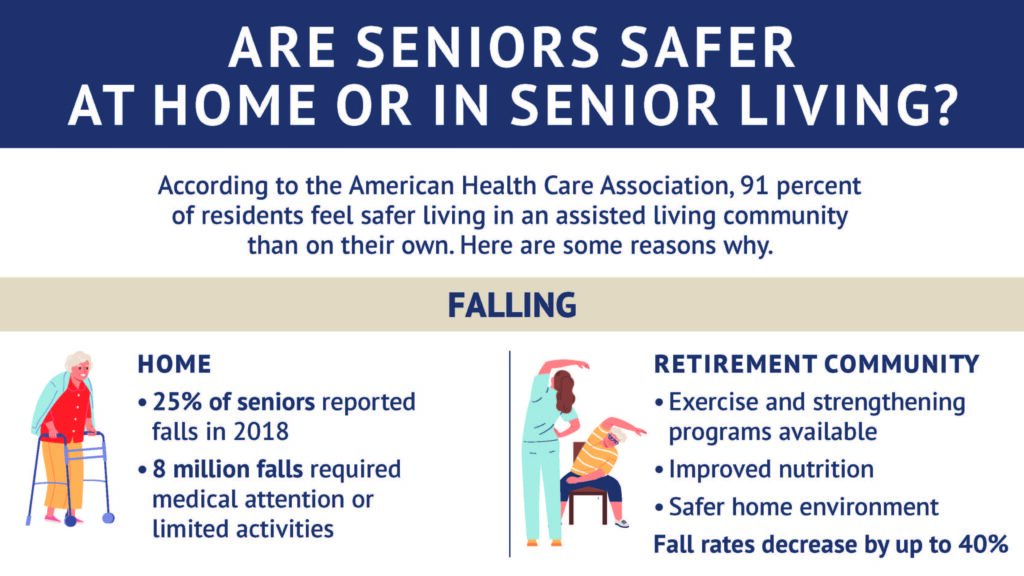
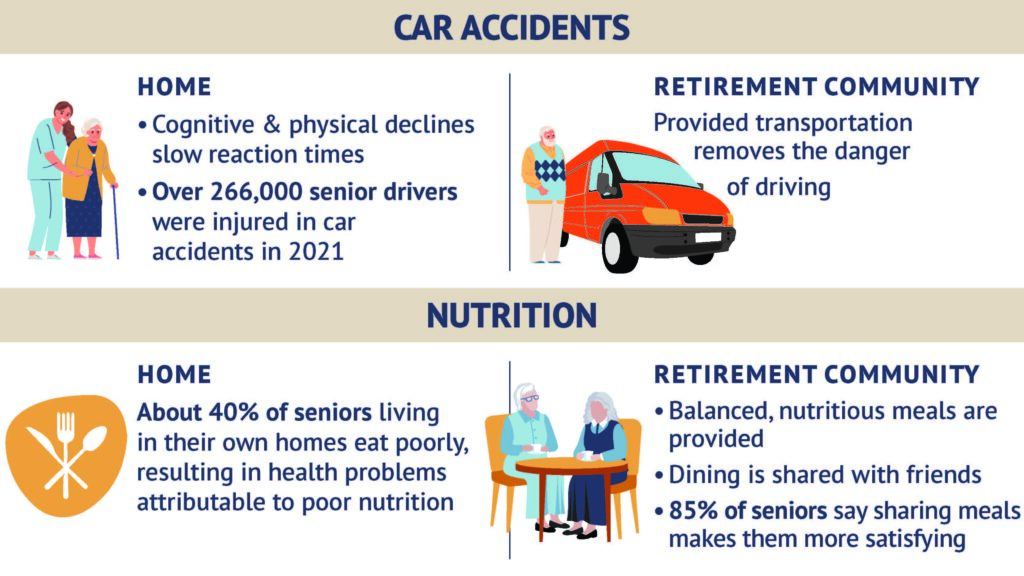

Statement of Fairness: Considering senior living options for yourself or a loved one? We’re here to help at every step. And even though we specialize in independent living communities, our goal is for YOU to find your best path to gracious retirement living, and part of how we achieve that is by providing reliable information on all types of senior living, not just the ones we offer. When our offerings serve as useful illustrations to a specific topic, you can find that information in the attached sidebar.
Evaluating Senior Safety Systems
Whether you’re looking for an independent or assisted living community, you’ll want to know everything you can about their safety measures. To help you make an informed choice that will give you and your family peace of mind, look closely at these five key areas of a community’s senior safety systems:
- Convenience services
- Emergency response practices and protocols
- Surveillance technology and monitoring
- Staff qualifications and training
- Design and safety features
Convenience and Peace of Mind
To begin understanding the senior safety and security features of community living, let’s start with the role of convenience. Most senior living communities operate on the concept of convenience as a core value. You get a comfortable living arrangement with less of the hassle of ownership and living alone.
But in addition to living a vibrant life with less stress, you eliminate the very real risk of injury normally associated with home maintenance and repair activities. Simply embracing a life with more convenience means you have to take less personal risk on a day-to-day basis.
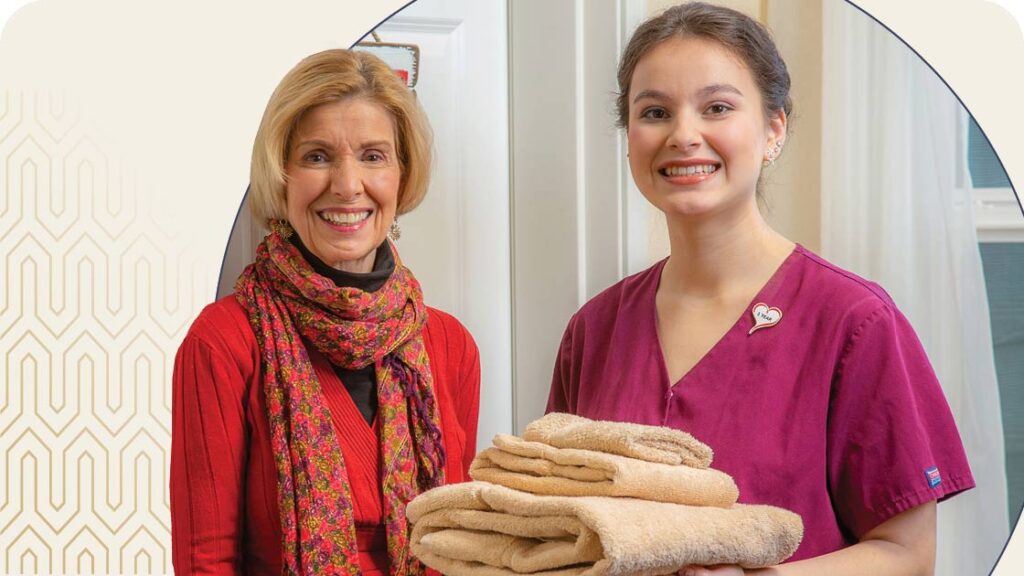
Emergency Response Protocols
Every senior living community should be in compliance with their state’s emergency preparedness guidelines. The guidelines cover:
- Preparing for natural disasters, fire, infectious illness outbreaks and more
- Risk assessment
- Communication plans
When you visit the building, look for fire and smoke alarms, fire extinguishers, an indoor sprinkler system, and well-marked exits. You should also see floor plans posted with the locations of stairways designated as the emergency exits. Exits with wheelchair access should also be highlighted.
Questions to ask during your community tour:
- How often are evacuation drills and emergency training held for residents and staff?
- How do you alert residents and family members in case of an emergency?
- What procedures did you put in place during the COVID pandemic?
- How are staff trained to protect residents in case of an emergency?
- Do you have a generator or other form of backup power?
- Where do people who need mobility assistance go for help in an emergency?
Surveillance Technology and Security
Technology has added an exciting new dimension to senior safety and security. The alerts from these devices give staff the ability to respond quickly when a resident needs help.
Personal emergency response systems allow residents to call for help with the touch of a button. Worn as a necklace or bracelet, these wearable alert devices connect to a round-the-clock monitoring system. Immediate help can be quickly deployed for medical emergencies, accidents and other urgent situations. Other security systems are hands-free, using voice commands instead.
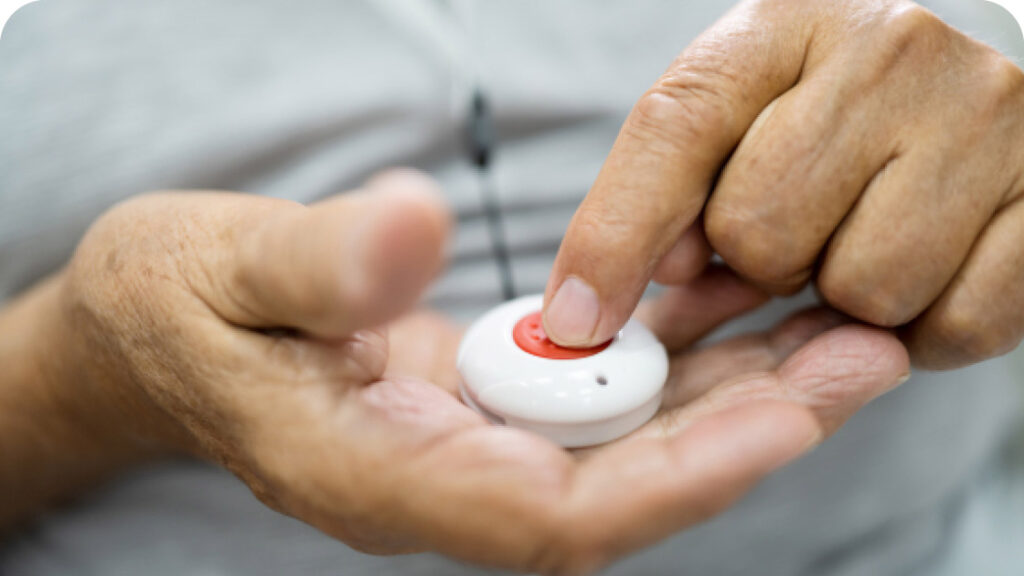
Another wearable device helps staff locate residents in need of assistance. This tracker is especially useful for older adults diagnosed with cognitive difficulties like dementia who tend to wander. As the person approaches an exit door, the device will set off an alarm so caregivers can quickly respond to the right location.
Wireless motion sensors placed in a resident’s apartment detect activity and provide for remote daily check-ins. With these monitoring devices, older adults feel safe without sacrificing privacy or independence.
Both indoors and outdoors, security cameras and lighting keep the property and people safe.
Questions to ask during your community tour:
- Can you demonstrate how this senior safety device works?
- What happens if your phone system or internet access is down?
- Are there alarms in each apartment?
- How are doors monitored after hours?
- Do residents have to sign out? Are visitors required to check in?
Staff Qualifications and Training
Different communities may have different requirements regarding staff qualifications and training. But inside any senior community that is actively working to put your safety and security first, each department should receive annual safety and security training covering emergency response procedures, resident safety protocols and security measures.
You’ll probably get a feel for how professional, efficient and friendly the staff is from your very first interaction. Do your best to meet and talk to as many employees as possible before deciding to move. You may find you hit it off immediately, or it may take a few visits before you can evaluate and judge.
Questions to ask during your community tour:
- Do you have staff available 24/7?
- How often is staff trained on senior safety and security?
- What is your staff-to-resident ratio?
- How do you handle staff turnover?
- How do you cover staffing if someone takes the day off?
- What are your procedures for background checks?
- Where/when are emergency drill schedules posted?
Community Design and Senior Safety Features
Equipping a private home with senior safety features is costly and can lower the resale price, but these should be standard in every community you consider.
To support independence, increase accessibility and minimize the risk of falls, buildings should have:
- Security door locks
- Wide, well-lit doorways and halls
- Slip-resistant flooring
- Safety locks to places like pools and spas
- Grab bars in the bathrooms
- Raised toilets
- Bright outside lighting
Questions to ask during your community tour:
- Do you have people on staff that maintain the building?
- If something breaks in a resident’s apartment, who do they tell?
- How do apartments’ safety features differ based on levels of living (independent living, assisted living, memory care or skilled nursing)?
See Things for Yourself
All senior living communities are licensed and inspected by the state. Whichever community you’re considering, schedule a tour, and go back two or three times. Ask for a copy of their latest state inspection report. Bring a notebook and your list of questions.
Older Adults Deserve to Live in Comfort, Safety and Security.
You’ll learn a lot each time you tour a senior community. By focusing your attention on the emergency response practices and protocols, surveillance technology, staff qualifications and training, plus their design safety features, you can make an informed decision and rest easy, knowing your loved one is safe. Make senior safety and security systems a priority in your search for a great place to live.
DID YOU ENJOY WHAT YOU JUST READ?
Join our exclusive community and subscribe now for the latest news delivered straight to your inbox. By clicking Subscribe, you confirm that you agree to our terms and conditions.
You’re Invited to Tour Wilshire Estates Senior Living in Silver Spring, MD

While you’re here we’ll show you our 50+ apartment styles. Drop in on fun daily activities and events. Meet our happy residents, friendly staff and compassionate live-in managers. Before you leave, enjoy a meal with us in our beautiful community dining room. When you live here, your apartment, amenities and services are all included in your monthly rent, so you don’t have to worry about risky home maintenance or housekeeping.
We can’t wait to show you around.
UP NEXT
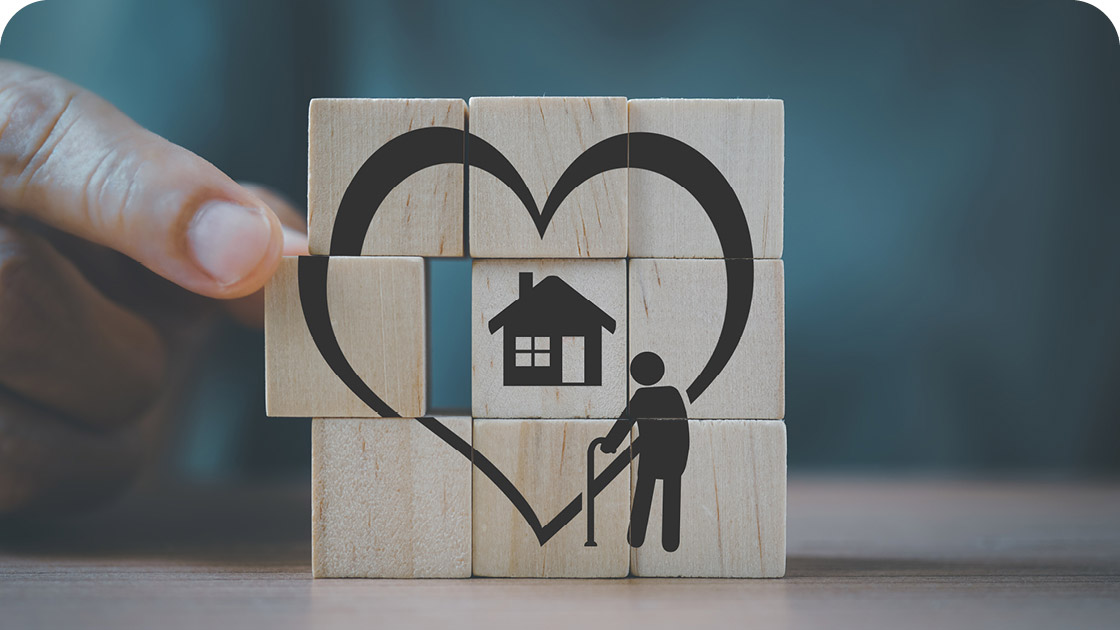
11 min read
Essential Home Safety for Older Adults
Imagine your loved one, comfortable and confident in their own home. They can navigate their living space with ease, engaging in the activities they cherish. This feeling of security is priceless, and creating a safe haven in their familiar surroundings is achievable.


Frequently Asked Questions:
What safety features should I look for in a senior living community?
When evaluating a senior living community, look for features such as emergency response systems, surveillance technology, well-trained staff and thoughtful facility design. Key safety elements include fire and smoke alarms, indoor sprinkler systems, well-marked and accessible emergency exits, security door locks, wide and well-lit hallways, slip-resistant flooring, grab bars in bathrooms, and bright outdoor lighting.
How do senior living communities handle emergencies?
Senior living communities are required to comply with state emergency preparedness guidelines, which include risk assessment, communication plans, and regular emergency training for staff and residents. Look for communities that conduct frequent evacuation drills, have clear procedures for alerting residents and families, maintain backup power sources, and provide special assistance for residents with mobility needs.
What technology is used to keep residents safe?
Many communities utilize personal emergency response systems, wearable alert devices and wireless motion sensors to ensure resident safety. These technologies allow residents to quickly call for help, enable staff to locate residents in need (especially those with cognitive challenges) and monitor activity without sacrificing privacy. Security cameras and controlled access points are also commonly used to enhance safety both indoors and outdoors.
FIND YOUR COMMUNITY
Related Articles
STORIES, INSIGHTS & RESOURCES
As you and your loved ones navigate the exciting opportunities retirement presents, thoughtful planning is key. Stay informed with empowering articles for seniors covering health, lifestyle, finance and more.
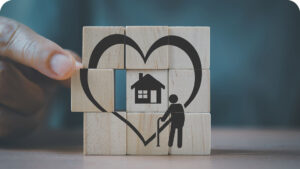
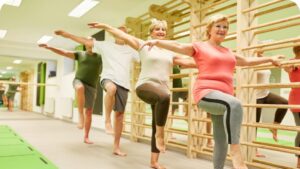
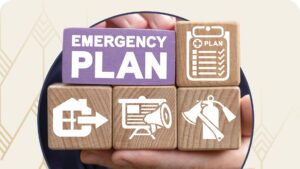

Chronicles Of The Heart
RESIDENTS SAY INDEPENDENCE IS A TOP PRIORITY
Below, residents explain how much they appreciate the freedom they experience at our independent living community. It’s empowering to continue to make your own decisions, and you’re free to create your day around your personal interests.

